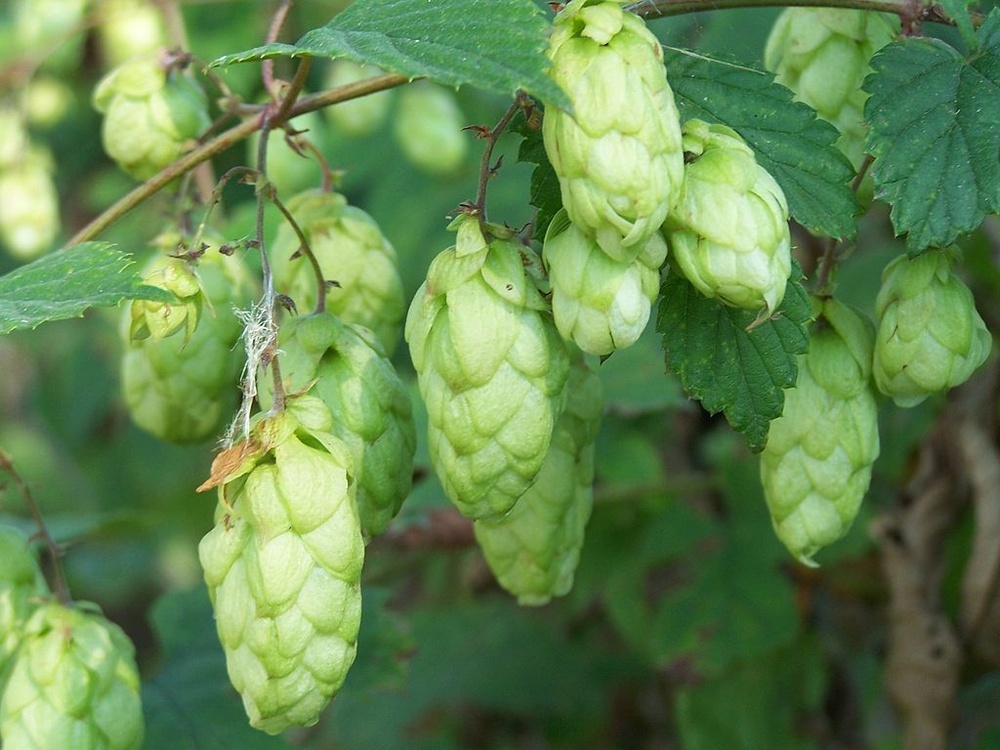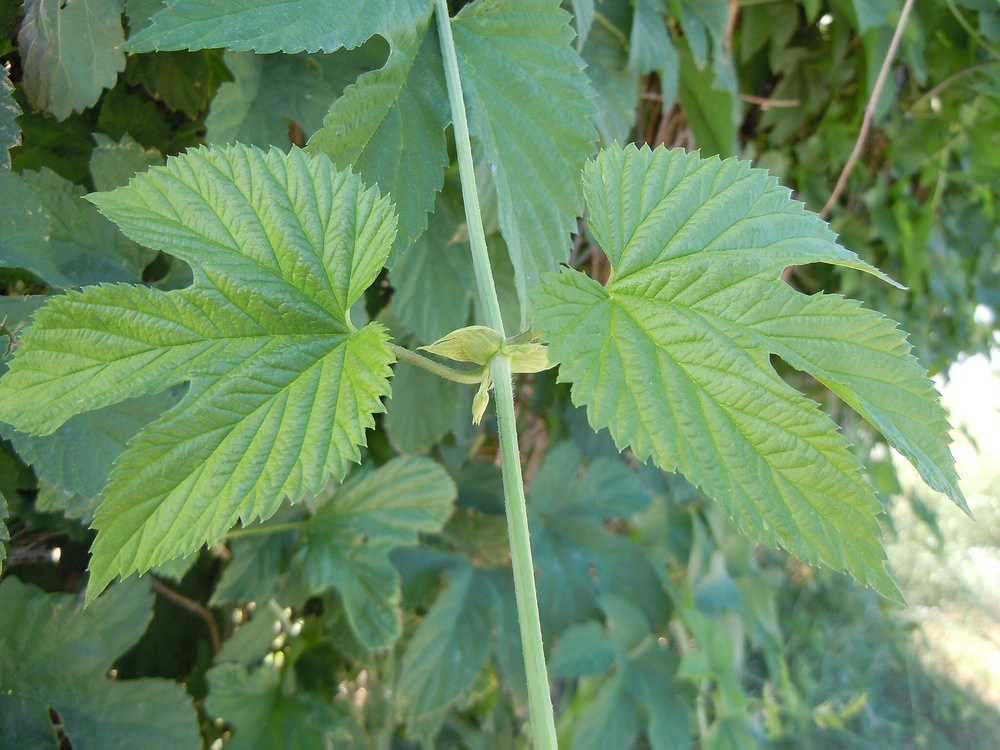Humulus lupulus
Hop / Hops, Common Hop
Cannabaceae (Hennepfamilie)Northern America (whole), Asia (whole), Europe (whole)

Edible plant part (5)
Flowers,
shoots (growing),
leaves,
stems,
seeds
Read 'form of consumption' for safe preparation methods
Hops, Common Hop belongs to the climbers in the food forest. The growth rate is fast. Fully grown the plant has an average height of 1 to 4.5 meter. and a width of 4.6 to 9.1 meter.
The Hops, Common Hop is decidious. It buds in april and it loses its leaves in november.
This species forms a rhizomes deep root system. Hops, Common Hop is no nitrogen fixer.
 foto: Nejmlez, https://commons.wikimedia.org/wiki/File:Humulus_lupulus.jpg
foto: Nejmlez, https://commons.wikimedia.org/wiki/File:Humulus_lupulus.jpg
 foto: Nejmlez, https://commons.wikimedia.org/wiki/File:Humulus_lupulus.jpg
foto: Nejmlez, https://commons.wikimedia.org/wiki/File:Humulus_lupulus.jpg
 foto: Matt Lavin, https://commons.wikimedia.org/wiki/File:Humulus_lupulus_lupuloides_%284943284638%29.jpg
foto: Matt Lavin, https://commons.wikimedia.org/wiki/File:Humulus_lupulus_lupuloides_%284943284638%29.jpg
Growth factors
- Frost (whole plant)
-
very strong frostcold frostmild frostlight frostno frost
- Light
-
full sunlight shadehalf shadefairly deep shadedeep shade
- Soil texture
-
sandloamlight clayheavy claypeat
- Soil moisture
-
inundationwetmoistdrydrought
- Soil acidity
-
very acidacidneutralalkalinevery alkaline
- Soil fertility
-
very richrichaveragepoorvery poor
Flowering and pollination
- Flowering period (peak)
- early july
- Flowering period (length)
- several months
- Pollination vector
- wind
- Plant reproductive fertility
- male and female plants needed
Life Span and Plant Health
Harvest and Consumption
Flowers
Shoots (growing)
Leaves
Stems
Seeds
- Harvesting period - start
- End of september
- Form of consumption
- Processed
- Harvesting period - start
- End of march
- Harvesting period - length
- Several months
- Form of consumption
- Processed
- Nutritional value - relatively high
- Minerals
- Existing and predicted market demand fresh
- Yes, market stays saturated
- Form of consumption
- Fresh
- Form of consumption
- Processed































